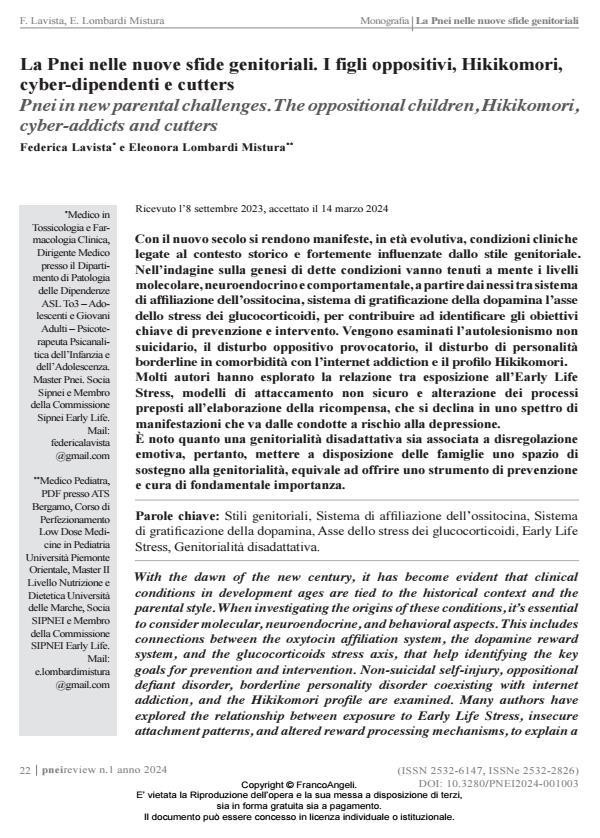Pnei in new parental challenges. The oppositional children, Hikikomori, cyber-addicts and cutters
Journal title PNEI REVIEW
Author/s Federica Lavista
Publishing Year 2024 Issue 2024/1
Language Italian Pages 15 P. 22-36 File size 1144 KB
DOI 10.3280/PNEI2024-001003
DOI is like a bar code for intellectual property: to have more infomation
click here
Below, you can see the article first page
If you want to buy this article in PDF format, you can do it, following the instructions to buy download credits

FrancoAngeli is member of Publishers International Linking Association, Inc (PILA), a not-for-profit association which run the CrossRef service enabling links to and from online scholarly content.
With the dawn of the new century, it has become evident that clinical conditions in development ages are tied to the historical context and the parental style. When investigating the origins of these conditions, it’s essential to consider molecular, neuroendocrine, and behavioral aspects. This includes connections between the oxytocin affiliation system, the dopamine reward system, and the glucocorticoids stress axis, that help identifying the key goals for prevention and intervention. Non-suicidal self-injury, oppositional defiant disorder, borderline personality disorder coexisting with internet addiction, and the Hikikomori profile are examined. Many authors have explored the relationship between exposure to Early Life Stress, insecure attachment patterns, and altered reward processing mechanisms, to explain a varied spectrum of behaviors ranging from risky activities to depression. It is well-known that dysfunctional parenting is linked to emotional dysregulation. Therefore, providing families with parenting resources and direct support translates into an essential prevention and care tool.
Keywords: Parental Styles, Oxytocin affiliation system, Dopamine reward sy stem, Glucocorticoids stress axis, Early Life Stress, Dysfunctional Parenting.
Federica Lavista, La Pnei nelle nuove sfide genitoriali. I figli oppositivi, Hikikomori, cyber-dipendenti e cutters in "PNEI REVIEW" 1/2024, pp 22-36, DOI: 10.3280/PNEI2024-001003